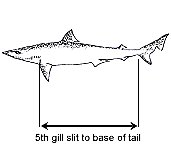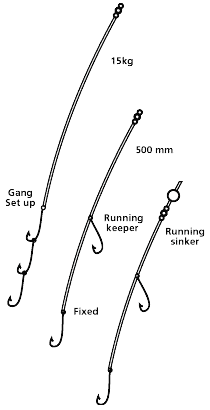Gummy Shark
Introduction
Mustelus antarcticus
The alternative names for the Gummy Shark are Australian Smooth Hound Shark, Sweet William and Flake.
Gummy sharks are grey and slender, with white spots and flat, plate-like teeth. They have long snouts, two dorsal fins that lack spines and a tail with a distinctive notch. They can grow up to 1.75m, maturing at 800 mm. They can live for up to 16 years.
Gummy Shark were first sold as flake from the Melbourne Wholesale Fish Market in the late 1920's to serve a booming Fish 'n' Chip trade. During the second world war the supply of cod liver oil, used to supply vitamin A, from the North Atlantic was lost. The discovery of a high vitamin A content in gummy shark liver created a boom in targeted shark fishing by SA & Victorian based fishers to source this new market.
The end of the war coupled with the ability to create vitamin A artificially, lead a large number of fishers to diversify into other areas. This left a small fleet of full time and part time boats to target shark for their flesh and re-supply flake for SA & Victorian fish and chips.
During this early period, fishers used long lines to catch sharks. In the 1960s monofilament gill nets were introduced and they have been the dominant fishing method since.
A harmless member of the shark family, gummy sharks have smooth flattened teeth with which to crush crabs, shrimps and shellfish they find on smooth sea bottoms. Of slim build and smooth skin they are closely related to the whiskery shark which has a thicker body. They have a grey back, which makes it more difficult for them to be seen when seen from above, and are white underneath, which makes them harder to spot from underneath.
They are commonly found in Southern Australian waters, as well as from Shark Bay, WA, to Port Stephens, NSW, and around Tas.
The gummy shark often occurs in small schools composed predominantly of one sex and size group, and are most active at night. Research conducted by way of tagging in Bass Strait and off eastern Tasmania has shown that it is capable of long migrations.
Some tagged females were recaptured in South Australia and Western Australia. Similar movements have not shown for males. It is ovoviviparous, producing litters of mostly 14 pups (although the number range from 1-38) in December after a gestation of 11-12 months.
Ageing studies suggest that males mature at about 4 and females at about 5 years of age. This species is a major component of the southern Australian shark fishery (current annual production 5000 tonnes, valued at $20 million to the fisherman). It has been exploited heavily since the 1970's and is currently over-fished.
The meat, which is used for consumption mostly under the name of "flake", is very popular in South Australia, Victoria and Tasmania.
Legal Minimum Length
| Current Limit: | 45 cm | [Previous: | Not Available] |

Bag Limit
| Current Bag Limit: | 2 per person | [Previous: | Not Available] |
| Current Boat Limit: | 6 per boat | [Previous: | Not Available] |
Type of Tackle
Use line between 10 to 15kg.
A heavy action rod around 1.8m is adequate.
Hook Selection
Size 4/0 - 6/0 snelled hooks that come pre packed are ideal.
Baits Used
Crabs, Squid, Pilchard, Barracouta strips, Cockles, Marine Worm.
Rigs Used
Rig No. 1

 Fishing Tip : Fishing Tip : |
|
| Why not contact fishSA.com about your Fishing Tip |
|
|